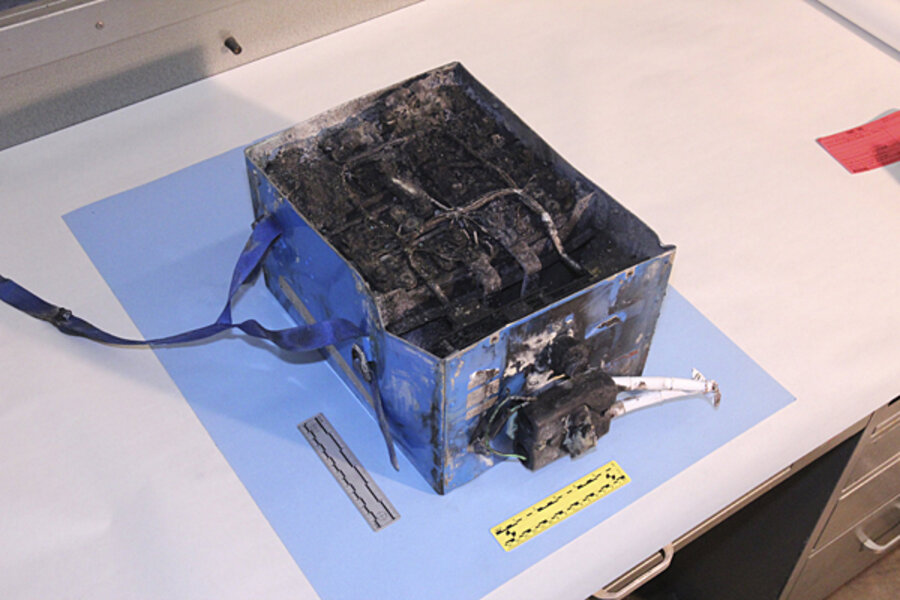Boeing 787 battery debacle: lessons for clean energy
Loading...
Boeing (NYSE: BA) may soon be on the verge of renaming its new 787 the Nightmareliner…
After a prolonged development program and costly production delays, Boeing started delivering its latest state-of-the-art airplane just 15 months ago, three years behind schedule. Although the company has a lucrative backlog of nearly 800 787s on order, worth roughly $200 billion in revenues, production rates have been limited, as only 50 units have been delivered in a little over a year.
Alas, opening the production floodgates is not likely to happen just now. In early limited service with a few airlines, the 787 is causing Boeing and its customers major headaches. Thankfully, no-one has been injured, but a number of high-profile malfunctions have caused significant operational issues.
None has been worse than last week’s emergency landing in Japan, prompted by a burning smell in the cockpit. This followed closely on the heels of an on-the-ground fire in Boston the previous week, upon which one aviation observer noted: “Onboard fires on airplanes are as bad as it gets.”
These two incidents in close sequence produced a “That’s It!” moment, wherein all the aviation authorities worldwide put their collective feet down and issued orders to ground all 787s until the deficiencies have been identified and resolved. There hasn’t been any similar draconian action in over 30 years, since the grounding of all DC-10s after the disastrous American Airlines 191 crash on takeoff at O’Hare in May 1979.
The most critical problems for the 787 all seem to relate to the batteries on board the plane. The 787 design uses lithium-ion batteries made by GS Yuasa (6674) for many more functions than most airliners in order to maximize fuel efficiency.
Used in consumer electronics and electric vehicles, lithium-ion batteries are desirable because of their high energy/power density. Simply put, they are very powerful for their size and weight — and in an airplane, size and weight matter a lot, especially when fuel efficiency is the goal.
Unfortunately, directly related to their high energy/power density, lithium-ion batteries are known to get hot. Thermal management is critical, or else lithium-ion batteries start bulging and leaking electrolyte, which is highly corrosive. Moreover, if the batteries don’t start bulging and leaking in response to increasing temperatures, a far worse fate could potentially arise: explosions and/or fires.
This is not news. A few years ago, Hewlett-Packard (NYSE: HPQ) settled a class action lawsuit involving burning laptops caused by lithium-ion battery fires. Indeed, these experiences with lithium-ion batteries caused some to wonder if their use should be banned from airplanes for safety reasons.
Given this history of potential concern, you would think that Boeing would have moved heaven-and-earth to ensure that any lithium-ion battery on the 787 couldn’t experience a comparable problem. Indeed, according to this article, Boeing engineers attest that the battery design now in use in the 787 was tested for a cumulative 1.3 million hours without failure.
It may not be easy to diagnose and solve a problem that hadn’t surfaced in 1.3 million previous hours. Worryingly for all involved, GS Yuasa thinks it may take months to get to the bottom of the issues.
Two dissimilar reports over the weekend offer some hope for the principals that the solution will be sooner rather than later. One story hinted that the battery problems may be confined to one batch of production. Another story indicated that the two toasted batteries had been fed excessive voltage by their power supply system — a problem that perhaps could be resolved more easily.
Even if it’s a short hiccup, this is exceptionally costly to Boeing. Not only is Boeing likely to have to cease new 787 production causing further delivery delays, face compensatory payments to airlines for their hardships, and incur increased costs in implementing whatever fixes are necessary on completed and already-in-the-queue units, but the potential credibility damage is enormous, even if unquantifiable.
For a company rooted in commercial aviation, nothing is more important than its safety reputation, which Boeing has built so superbly for nearly a century. (“If it ain’t Boeing, I ain’t going.”)
At least three implications emerge from this escapade for the cleantech world:
- Early adopters of new technologies in mission-critical application with large attached liabilities will be highly risk-averse. The economic advantages afforded by improvement have to far outweigh the possible consequences of failure.
- Lithium-ion batteries take another kick in the stomach. As this posting by John Voelcker suggests, it will also hit the cause of electric vehicles, rightly or wrongly.
- Battery technology still needs a lot of work — either to improve lithium-ion batteries or to develop commercially-viable substitutes with similar energy/power density. Here is a recent posting by GigaOM blogger Katie Fehrenbacher entitled “13 Battery Startups to Watch in 2013.”







